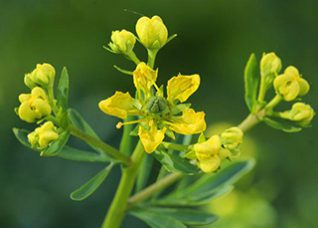
MinerAlert

MinerAlert
Ruta graveolens
Ruda.

The leaves and flowers.
Rue is sometimes taken as tea, but parts of the plant are also applied to the skin.
In traditional healing practices, Rue tea has been used to promote menstruation, against hypertension and to treat hysteria. Crushed rue leaves are placed in the ear canal to relieve ear aches and headaches. Externally, rue is applied as a skin antiseptic and insect repellant, as well as a poultice against rheumatic pain. Due to its toxicity, the use of this plant is now considered obsolete by modern scientific herbalism (phytotherapy).
Safety/Precautions:
Before you decide to take any medicinal herb or herbal supplement, be sure to consult with your health care professional first. Avoid self-diagnosis and self-medication: Always be on the safe side!